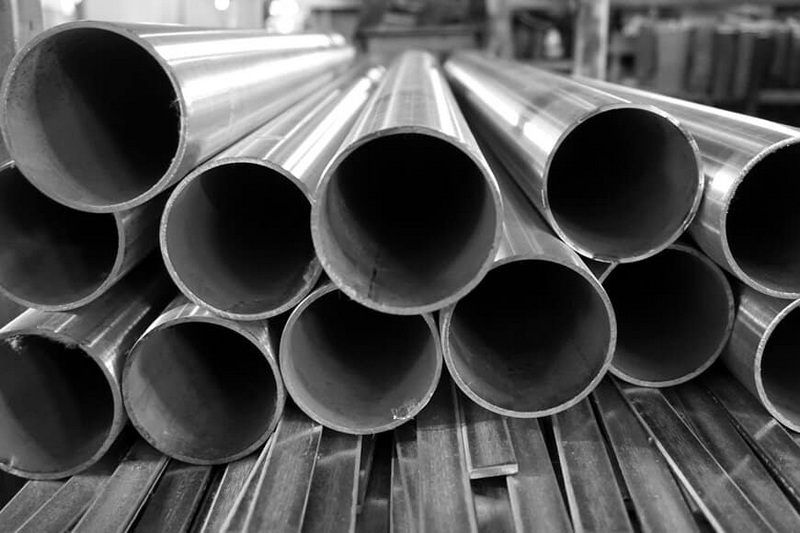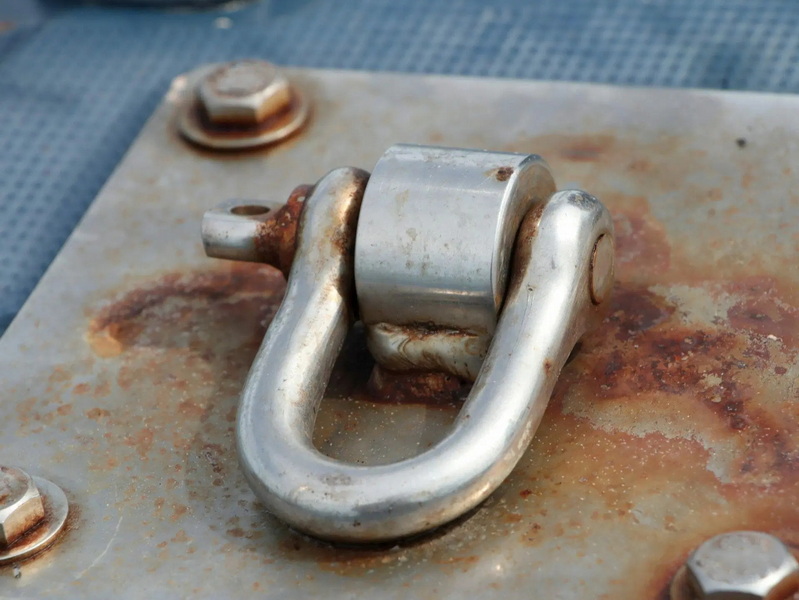English


Views: 222 Author: Tomorrow Publish Time: 2025-06-06 Origin: Site











Content Menu
● The Science Behind Stainless Steel Durability
● Key Factors Affecting the Durability of A Stainless Steel
● Stainless Steel in Different Harsh Environments
>> Marine and Coastal Environments
>> Chemical Processing and Industrial Settings
>> Food Production and Healthcare
>> Oil, Gas, and Energy Sectors
● Advantages of Stainless Steel Over Other Materials
● Selecting the Right Grade of Stainless Steel
● Maintenance Tips for Maximizing Stainless Steel Durability
● Innovations Enhancing Stainless Steel Durability
● Environmental Impact and Sustainability
● FAQ
>> 1. What makes a stainless steel resistant to corrosion?
>> 2. Which grade of a stainless steel is best for marine environments?
>> 3. Can a stainless steel withstand high temperatures?
>> 4. How does a stainless steel compare to mild steel in harsh environments?
>> 5. Does a stainless steel require special maintenance?
A stainless steel is renowned for its durability, especially in harsh environments where other metals often fail. Its unique composition and properties make it the material of choice for industries ranging from marine engineering to chemical processing. This article explores the science behind the resilience of a stainless steel, the factors influencing its longevity, and why it remains the preferred solution in extreme conditions.

A stainless steel is an alloy primarily composed of iron, chromium, and often nickel and molybdenum. The key to its durability lies in its ability to form a thin, passive oxide layer on its surface. This layer is self-healing and protects the underlying metal from corrosion and oxidation, even when scratched or damaged. Unlike regular steel, which rusts quickly when exposed to moisture and air, a stainless steel maintains its integrity and appearance in environments that would quickly degrade other materials.
This passive layer makes a stainless steel highly resistant to a wide range of corrosive agents, including water, salt, acids, and industrial chemicals. The result is a material that not only resists rust but also maintains its mechanical strength and appearance over time.
The longevity of a stainless steel in harsh environments depends on several critical factors:
- Grade Selection: Different grades of a stainless steel offer varying levels of resistance to corrosion and mechanical stress. For example, grades such as 304 and 316 are widely used for their enhanced resistance to rust and chemical exposure, with 316 being particularly suitable for marine and coastal environments due to its higher nickel and molybdenum content.
- Environmental Conditions: The severity of the environment plays a significant role. Coastal areas, industrial zones, and chemical plants expose materials to salt, humidity, and aggressive chemicals, all of which can accelerate corrosion. However, with the right grade, a stainless steel can withstand these challenges for decades.
- Maintenance Practices: While a stainless steel is low-maintenance compared to other metals, regular cleaning and inspection can further extend its lifespan. Removing contaminants and ensuring the passive layer remains intact are essential for maximum durability.
- Mechanical Stress and Temperature Extremes: Some environments subject materials to high pressures, temperatures, or mechanical loads. Advanced grades like F55 super duplex stainless steel are engineered to maintain strength and corrosion resistance even under these extreme conditions.
A stainless steel, especially in grades like 316 and F55, is widely used in marine applications. It resists the corrosive effects of saltwater, humidity, and fluctuating temperatures. Offshore platforms, ship components, and coastal infrastructure rely on a stainless steel to maintain structural integrity and safety over long periods.
Saltwater is one of the most aggressive agents for corrosion, yet a stainless steel's passive layer provides a formidable defense. In addition, the alloy's resistance to biofouling and marine organisms reduces maintenance frequency and costs. This makes a stainless steel invaluable for docks, seawalls, and underwater pipelines.
Chemical plants and factories expose materials to acids, alkalis, and other aggressive substances. A stainless steel's resistance to pitting, crevice corrosion, and stress corrosion cracking makes it indispensable for tanks, reactors, and piping systems in these environments.
The ability of a stainless steel to withstand chemical attack without compromising its mechanical properties ensures safety and longevity. This is critical in preventing leaks, contamination, and catastrophic failures. Furthermore, the versatility of stainless steel grades allows engineers to tailor material selection to specific chemical exposures and temperature ranges.
Environments that demand high standards of cleanliness and hygiene, such as food processing lines and hospitals, benefit from the easy-to-clean and non-reactive nature of a stainless steel. Its ability to withstand frequent cleaning and exposure to disinfectants without corroding ensures long-term performance and safety.
A stainless steel surface does not harbor bacteria or pathogens, making it ideal for sterile environments. Additionally, its resistance to staining and discoloration maintains aesthetic appeal and complies with strict regulatory standards. This combination of durability and hygiene makes a stainless steel a critical material in these sectors.
A stainless steel is essential in the oil and gas industry, where equipment must endure both harsh chemicals and extreme mechanical stress. Super duplex grades like F55 offer exceptional strength and resistance to seawater corrosion, making them ideal for offshore platforms, pipelines, and pressure vessels.
The extreme pressures and temperatures encountered in drilling and extraction demand materials that do not degrade or fail. A stainless steel's toughness and corrosion resistance reduce downtime and maintenance costs, improving operational efficiency. Moreover, its ability to resist stress corrosion cracking in chloride-rich environments helps prevent dangerous failures.

- Corrosion Resistance: The primary advantage of a stainless steel is its ability to resist corrosion in environments where mild steel or aluminum would quickly degrade.
- Longevity: Structures and components made from a stainless steel often outlast those made from other materials, reducing the need for frequent replacements and repairs.
- Low Maintenance: The self-healing passive layer minimizes the need for protective coatings or regular painting, lowering overall maintenance costs.
- Structural Integrity: Even under continuous use and exposure to harsh elements, a stainless steel maintains its strength and does not crack or fail easily.
- Aesthetic Appeal: A stainless steel retains its shine and appearance, even after years of exposure to challenging conditions.
- Recyclability and Sustainability: A stainless steel is fully recyclable without loss of quality, making it an environmentally responsible choice for long-term projects.
Choosing the appropriate grade of a stainless steel is crucial for ensuring durability in harsh environments. Some of the most common grades include:
- 304 Stainless Steel: Offers good corrosion resistance and is suitable for many indoor and mild outdoor applications. It is often used in kitchen equipment, architectural features, and general-purpose piping.
- 316 Stainless Steel: Contains higher levels of nickel and molybdenum, making it highly resistant to saltwater and industrial chemicals. It is the preferred choice for marine and coastal environments, as well as chemical processing.
- F55 Super Duplex Stainless Steel: Engineered for extreme conditions, this grade boasts superior strength, resistance to pitting, crevice corrosion, and stress corrosion cracking. It is widely used in oil, gas, and chemical industries where both mechanical strength and corrosion resistance are critical.
- Other Specialized Grades: There are numerous other stainless steel grades designed for specific environments, such as 2205 duplex stainless steel, which balances strength and corrosion resistance, or 904L stainless steel, known for its resistance to strong acids.
While a stainless steel is inherently durable, following best practices can help maximize its service life:
- Regularly clean surfaces to remove contaminants and prevent buildup of corrosive agents. Use mild detergents or specialized stainless steel cleaners.
- Inspect for signs of damage or wear, especially in high-stress or high-exposure areas. Early detection of corrosion or surface damage can prevent costly repairs.
- Use appropriate cleaning agents that do not damage the passive oxide layer. Avoid chloride-based cleaners or abrasive materials that can scratch or degrade the surface.
- Select the right grade for the specific environment to ensure optimal performance. Consulting with material experts can help match stainless steel grades to application needs.
- Protect stainless steel from prolonged exposure to standing water or chemicals that could overwhelm its passive layer.
Recent advancements in metallurgy and surface treatment technologies have further improved the durability of a stainless steel in harsh environments. Techniques such as electropolishing enhance the smoothness and corrosion resistance of stainless steel surfaces by removing microscopic peaks and valleys where contaminants can accumulate.
Additionally, the development of new alloy compositions with optimized chromium, nickel, and molybdenum content continues to push the boundaries of corrosion resistance and mechanical strength. These innovations allow stainless steel to be used in increasingly demanding applications, from deep-sea exploration to advanced chemical reactors.
A stainless steel is not only durable but also environmentally sustainable. Its long service life reduces the need for frequent replacements, minimizing waste. Moreover, stainless steel is 100% recyclable without degradation of its properties. Recycling stainless steel requires less energy compared to producing new metal from raw ore, reducing carbon emissions and conserving natural resources.
Choosing a stainless steel for harsh environments aligns with sustainable development goals by promoting resource efficiency and reducing environmental footprint.
A stainless steel stands out as one of the most durable and reliable materials for harsh environments. Its unique combination of corrosion resistance, mechanical strength, and low maintenance requirements makes it the preferred choice across a wide range of industries. By selecting the appropriate grade and following proper maintenance practices, a stainless steel can deliver decades of service, even in the most challenging conditions. Innovations in alloy design and surface treatments continue to enhance its performance, ensuring stainless steel remains at the forefront of materials technology. Additionally, its sustainability and recyclability make it a responsible choice for future-focused projects.

A stainless steel forms a thin, passive oxide layer on its surface, which protects it from rust and chemical attack. This layer is self-healing, meaning it can repair itself if damaged, ensuring long-term resistance to corrosion.
Grade 316 stainless steel is widely regarded as the best choice for marine and coastal environments due to its higher nickel and molybdenum content, which enhances its resistance to saltwater and harsh chemicals.
Yes, certain grades of a stainless steel, such as F55 super duplex, are engineered to maintain their strength and corrosion resistance even at high temperatures, making them suitable for applications in the oil, gas, and energy sectors.
A stainless steel outperforms mild steel in harsh environments due to its superior corrosion resistance, longer lifespan, and lower maintenance requirements. Mild steel tends to rust and degrade quickly without protective coatings, while a stainless steel remains intact.
While a stainless steel is low-maintenance, regular cleaning and inspection help ensure its passive layer remains effective. Using suitable cleaning agents and avoiding abrasive materials will keep a stainless steel performing at its best.
Stainless Steel Grades 201 Vs 304: Cost Vs Performance Breakdown
316L Vs 316 Stainless Steel Grades: Which Is Better for Corrosion Resistance?
Comparing Austenitic Vs Martensitic Stainless Steel Grades: What You Need To Know?
Stainless Steel 430 Vs 304: Key Differences Explained for Manufacturers
304 Vs 316 Stainless Steel Grades: Which One Suits Your Project Best?
Stainless Steel Pipes Vs Galvanized Pipes: Durability And Cost Analysis
Comparing Stainless Steel Pipes And PVC Pipes: What You Need To Know?
Stainless Steel Pipes Vs Copper Pipes: Pros And Cons for Industrial Use
Seamless Stainless Steel Pipes Vs Welded Pipes: Key Differences Explained
Stainless Steel Pipes Vs Carbon Steel Pipes: Which One Suits Your Project?
